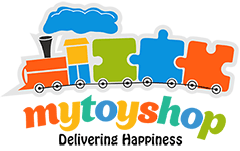Today, parents are more mindful than ever about the items they bring into their homes, to ensure their children's safety and well-being. When it comes to toys, some pose potential risks due to the presence of detrimental materials. Therefore, it is essential for parents to be aware of the safety standards and opt for only safe and non-toxic alternatives. However, sadly, numerous products still harbour harmful chemicals that threaten health, compelling parents to be cautious when buying playthings for their little ones.
Beyond The Label: The Smart Parent’s Guide To Safe Toys!
Making sure that the toys are safe involves considering both their physical and chemical aspects that could affect a child's health. Toys deemed to be of high quality and safe for children undergo rigorous testing to ensure they do not pose risks of choking, strangulation, or other physical hazards. Furthermore, these are crafted from materials that do not contain dangerous chemicals or sharp edges, which could harm children. Children-safe toys not only protect from immediate risks of physical injuries but also from long-term health problems caused by toxic substances. As children's bodies are still developing, exposure to harmful chemicals in some toys can lead to severe health issues such as allergies, breathing difficulties, or developmental delays.
Knowing about the materials used in non-toxic toys is essential for making smart shopping choices. These toys are generally made from natural materials that do not emit harmful substances. Common non-toxic materials include wood, organic cotton, wool, natural rubber, and plant-based dyes. Wooden toys are valued for their long-lasting nature and visual appeal and often feature non-toxic finishes like beeswax or linseed oil. Organic cotton is great for plush toys and dolls since it’s free from pesticides and synthetic fertilizers. Wool is another option offering similar benefits along with flame resistance. Sustainably sourced from trees without harmful chemicals, natural rubber stands out for its flexibility and strength. Additionally, plant-based dyes provide a safe alternative to chemical dyes known for causing skin irritation and chemical exposure. Opting for such toys not only ensures safety but also promotes sustainable practices beneficial to the environment.
Healthy Play, Happy Child: Key Benefits Of Choosing Safe And Non-Toxic Toys:
Picking the right toys for your child is more crucial than you may realize. Opting for safe and non-toxic toys brings many benefits, ensuring not just entertainment but also well-being and development in a child's playtime.
Some of the key advantages include:
Non-toxic toys limit exposure to harmful chemicals such as lead, phthalates, and BPA, which can affect a child’s developmental and neurological growth. Ensuring toys are free from these toxins fosters healthier physical and cognitive development.
High-quality non-toxic toys are manufactured to be safer against accidents like swallowing small parts or breaking into sharp pieces, thus reducing injury risks.
Opting for eco-friendly, non-toxic toys often means selecting products made from sustainable materials and processes. These choices reduce environmental pollution and promote sustainability.
Non-toxic toys are typically hypoallergenic, which reduces the risk of allergic reactions in sensitive children. By choosing materials like organic cotton or untreated wood, you provide a comforting play environment free of irritants.
Safe, non-toxic toys are often made with quality materials that withstand rigorous play sessions better than cheaper alternatives. This durability ensures the toys last longer.
Parents can enjoy a worry-free experience knowing their children are playing with toys that meet high safety standards, allowing more focus on creating cherished memories together.
How To Identify Safe And Non-Toxic Toys?
Choose Safe Materials:
Pick toys made from non-toxic materials. Look for labels like BPA-free, lead-free, and phthalate-free to ensure safety.
Check for Safety Labels:
Search for certifications like ASTM or EN71 to confirm the toy has been tested for safety standards.
Mind the Size:
Make sure toys are suitable for your child's age and size to prevent choking hazards, especially for those under three years old.
Inspect for Sharp Edges:
Check toys for any sharp points or edges that might injure a child. They should be smooth and secure.
Opt for Non-Toxic Paints:
For wooden or painted toys, ensure they have water-based or non-toxic paints free from harmful metals like lead.
Stay Informed on Recalls:
Keep an eye out for toy recalls through consumer protection websites to avoid unsafe products.
Look for Quality and Durability:
Choose well-made, sturdy toys that last longer and don't break easily into small parts.
Be Cautious with Magnets and Batteries:
Avoid toys with small magnets or button batteries, which are dangerous if swallowed. Ensure battery compartments are safely closed.
Read Reviews:
Check reviews by other parents or protection agencies to uncover safety issues you might not see in descriptions.
Think Green:
Select eco-friendly toys made from sustainable or recycled materials, as they often contain fewer harmful chemicals.
Summary:
Ensuring the toy you are picking for your kid is safe starts with checking how they're built and what they're made of. Safe, high-quality toys get thoroughly tested to eliminate the chances of fatal accidents like choking or exposure to toxic substances. Choosing toys made of natural materials like wood or organic cotton ensures your child's safety as well as the planet's well-being. Always remember to check for safety badges, watch out for toxins, and pick green toys for a safe play space for kids.
